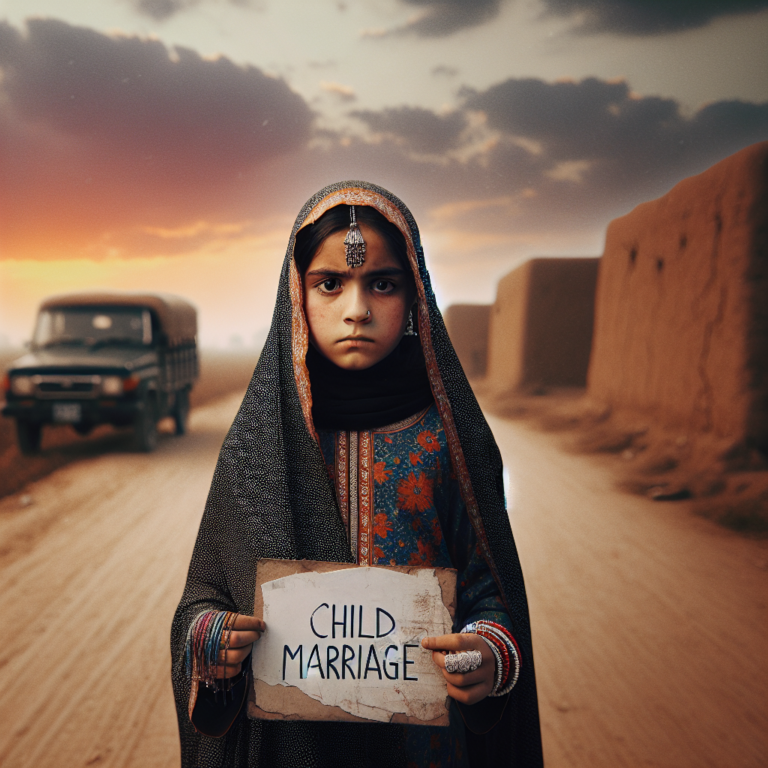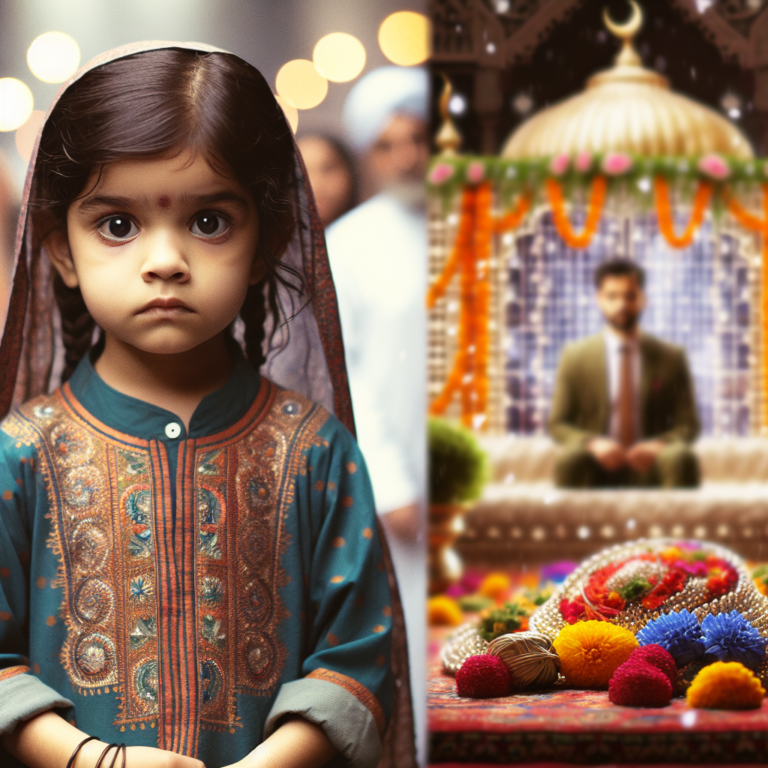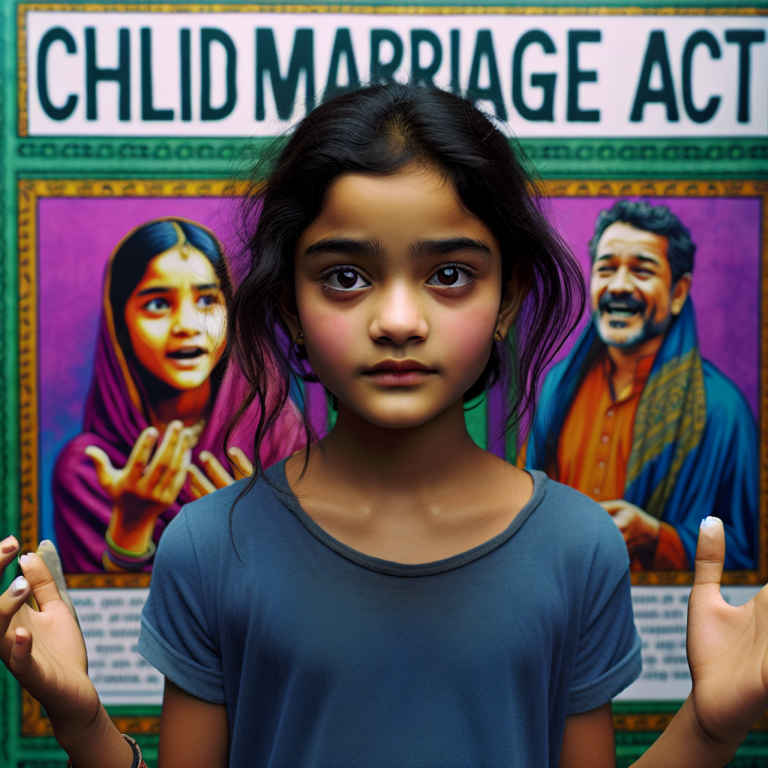Breaking the Cycle: Ending the Practice of Child Marriage
Introduction
Child marriage is a deeply rooted practice that affects millions of girls around the world. It is a violation of basic human rights, robbing these young girls of their childhood, education, and future prospects. Child marriage perpetuates a cycle of poverty, gender inequality, and violence, contributing to the intergenerational transmission of this harmful practice. Breaking this cycle requires a comprehensive approach involving legislation, education, economic empowerment, and community engagement. This article explores the detrimental effects of child marriage, the progress made so far, and the strategies needed to end this practice once and for all.
The Detrimental Effects of Child Marriage
Child marriage has severe and long-lasting consequences for the girls involved. Physically, child brides often face complications during pregnancy and childbirth due to their immature bodies. They are at a higher risk of suffering from obstetric fistula, malnutrition, and sexual violence. Besides the physical health implications, child marriage severely limits educational opportunities, as girls are forced to drop out of school to assume familial responsibilities. These girls are more likely to remain impoverished, lack economic independence, and experience higher rates of domestic abuse.
Child marriage also perpetuates a cycle of poverty and gender inequality. When girls are married off at a young age, their potential for education and economic development is curtailed. This perpetuates a cycle of poverty, as these young girls become dependent on their husbands and are often unable to find gainful employment. Moreover, child marriage reinforces gender inequality, as girls are denied equal rights and opportunities. It entrenches the belief that girls are inferior to boys, undermining efforts to achieve gender equality.
Progress Made so Far
Global efforts to address child marriage have shown some progress in recent years. Many countries have increased the legal age of marriage, making it more difficult for child marriages to take place. Governments, non-governmental organizations, and grassroots movements are raising awareness about the harmful consequences of child marriage and advocating for its eradication. International organizations such as Girls Not Brides and UNICEF have played instrumental roles in spotlighting the issue and mobilizing resources to end child marriage.
In addition to legal measures, education has proven to be a potent tool in tackling child marriage. Providing girls with access to quality education equips them with the necessary knowledge and skills to make informed decisions regarding their lives and futures. Furthermore, empowering girls economically helps break down the cycle of poverty. Programs that provide vocational training, scholarships, and microfinance support have demonstrated positive outcomes in delaying child marriages and promoting girls’ empowerment.
Strategies to End Child Marriage
Ending child marriage requires a comprehensive approach involving various stakeholders. The following strategies are crucial for breaking the cycle of child marriage:
1. Legislative reforms: Governments must enact and enforce laws that prohibit child marriage and set the legal age of marriage at 18 for both girls and boys. Laws alone are not sufficient, as implementation and enforcement are critical.
2. Education and awareness: Investing in girls’ education and raising awareness about the consequences of child marriage can help shift societal norms and attitudes. This can be achieved through community-based programs, school curricula, and social media campaigns.
3. Economic empowerment: Providing opportunities for economic empowerment, including vocational training, microfinance, and job creation, can reduce families’ economic dependency on marrying off their daughters at a young age.
4. Supportive services: Establishing support systems for child brides such as access to healthcare, legal aid, and counseling services is essential in ensuring their well-being and promoting their independence.
5. Engaging communities: Working closely with religious and community leaders to challenge traditional norms and practices is crucial. Engaging men and boys as allies in the fight against child marriage is also vital in changing perceptions and behaviors.
Frequently Asked Questions (FAQs)
Q: What causes child marriage?
A: Child marriage is primarily driven by poverty, gender inequality, and cultural practices. Factors such as the perception of girls as economic burdens, lack of education, and harmful traditional beliefs contribute to the practice.
Q: How prevalent is child marriage?
A: Child marriage is prevalent in many regions, particularly in sub-Saharan Africa, South Asia, and parts of the Middle East. Globally, it is estimated that 12 million girls are married before the age of 18 every year.
Q: What are the consequences of child marriage for girls?
A: Child marriage has severe consequences for girls, including increased risks of maternal mortality, domestic violence, lack of education, and perpetuation of poverty.
Q: What progress has been made in ending child marriage?
A: Progress has been made through legal reforms, awareness campaigns, and educational initiatives. Many countries have raised the legal age of marriage, and organizations like Girls Not Brides and UNICEF actively work towards ending child marriage.
Q: How can individuals contribute to ending child marriage?
A: Individuals can contribute by supporting organizations working to end child marriage, raising awareness, advocating for legislative changes, and supporting girls’ education and empowerment programs.
Conclusion
Child marriage is a harmful practice that perpetuates poverty, gender inequality, and violence. Breaking the cycle of child marriage requires a comprehensive approach involving legislative reforms, education, economic empowerment, supportive services, and community engagement. Although progress has been made, efforts must continue to end child marriage and create a world where every child has the opportunity to thrive, grow, and fulfill their potential. By working collectively, we can break this cycle and ensure a brighter future for millions of young girls.








